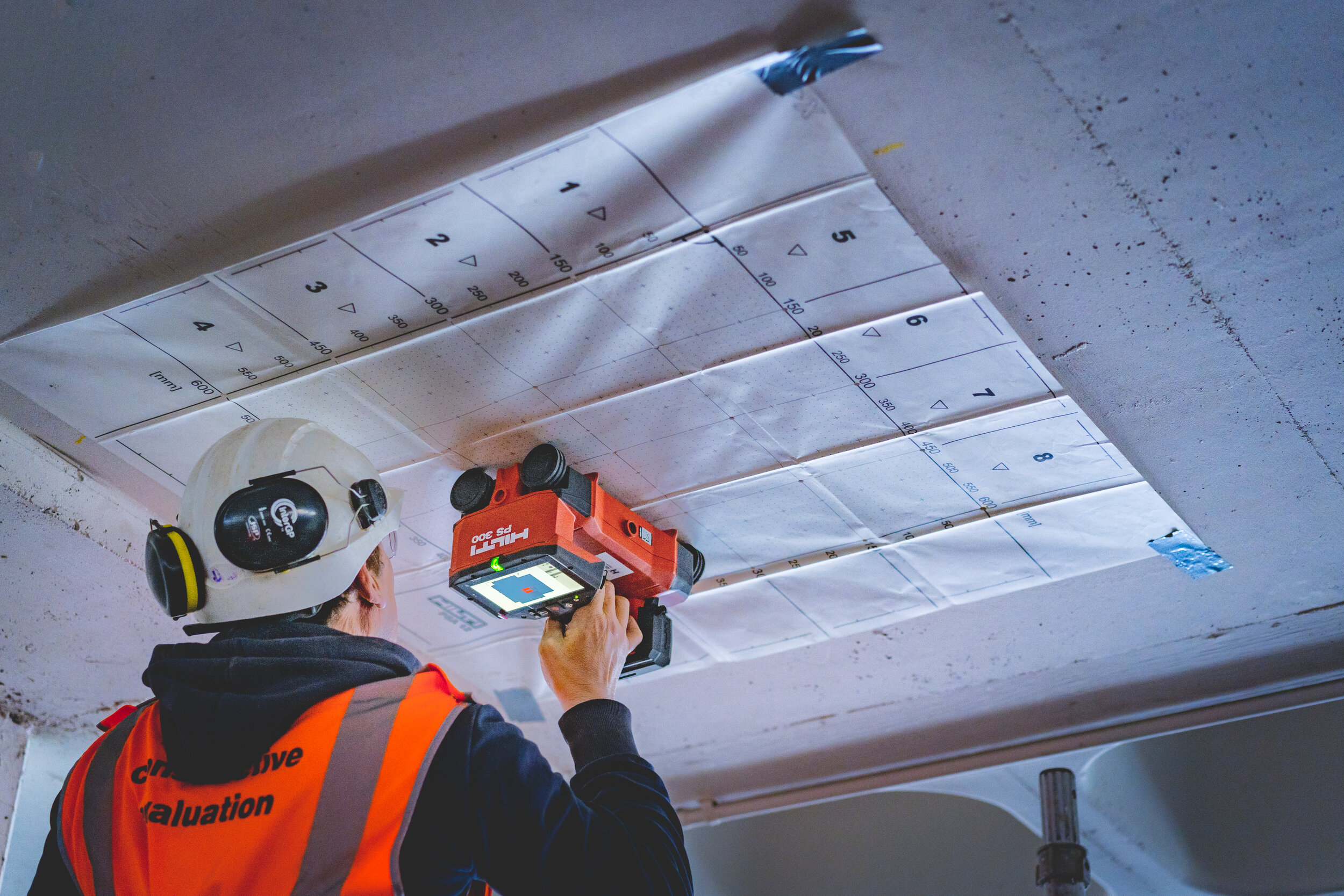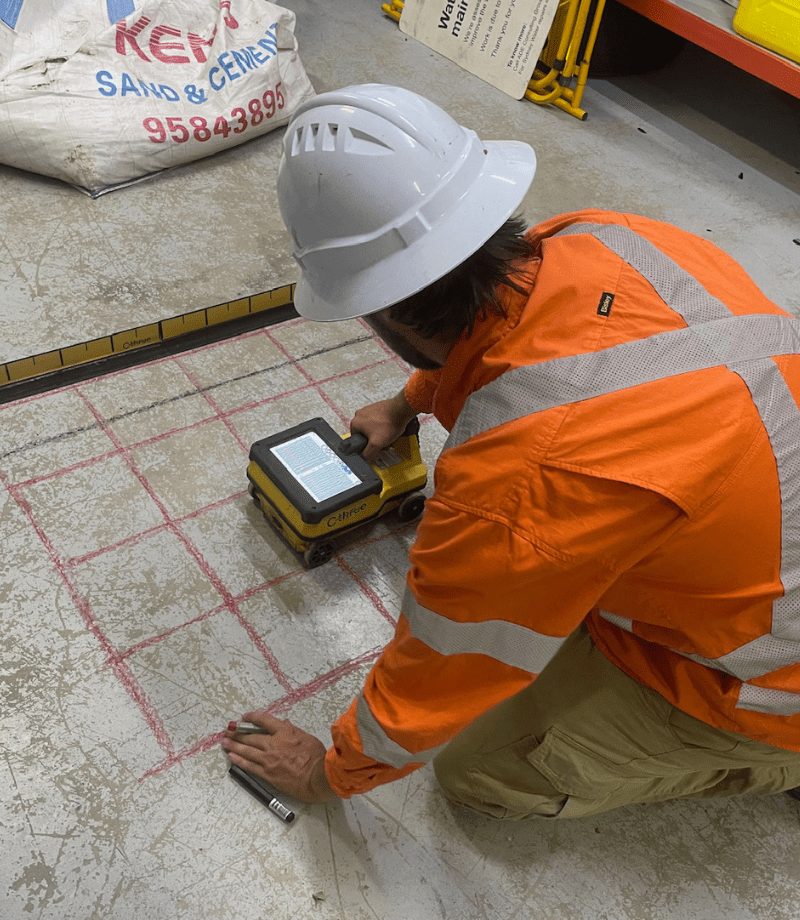RainierGPR Service Areas: Professional Concrete Scanning in Your Region
RainierGPR Service Areas: Professional Concrete Scanning in Your Region
Blog Article
Concrete Scanning: An Important Step Towards Making Sure Architectural Stability and Security
In the world of building and facilities upkeep, the relevance of concrete scanning can not be overemphasized. This precise process holds the key to unveiling possible threats concealed underneath the surface of apparently strong frameworks. By using advanced technology and methodologies, concrete scanning works as a crucial device in making certain that the integrity and security of structures and bridges are upheld to the greatest requirements. Nonetheless, past its surface-level implications, the role of concrete scanning expands far deeper than satisfies the eye.
Significance of Concrete Scanning
Concrete scanning plays a vital role in ensuring the architectural integrity and security of buildings and framework projects. By using sophisticated modern technologies such as ground-penetrating radar (GPR) and electromagnetic induction, professionals can non-destructively inspect concrete frameworks to discover possible defects, spaces, embedded things, and reinforcement layout. This process makes it possible for early detection of abnormalities that might endanger the security of a structure, preventing pricey problems and making certain the safety of residents.
Concrete scanning is especially vital throughout the preparation and building stages of a task. Before exploration, cutting, or coring into concrete, scanning helps determine the exact areas of rebar, post-tension cords, and various other ingrained aspects, decreasing the danger of accidental hits that can bring about architectural weak points. Furthermore, concrete scanning aids in quality assurance by validating the density of concrete covers and finding any kind of disparities that might influence the total toughness of the structure. Inevitably, purchasing concrete scanning services is not just a positive action to minimize dangers but additionally an essential step in the direction of maintaining the long-lasting safety and security of buildings and infrastructure.
Modern Technology for Concrete Evaluation

Benefits of Early Detection
Prompt detection of architectural concerns can considerably mitigate dangers and make certain the longevity of construction jobs. By identifying potential troubles at an early stage in the construction procedure, stakeholders can take positive actions to attend to issues before they escalate into bigger and a lot more pricey problems. Among the essential advantages of early detection is the avoidance of architectural failings, which can position severe safety and security hazards and result in job delays and economic losses.
Furthermore, very early detection enables timely repair services and maintenance, which can assist extend the life-span of the framework. By dealing with concerns quickly, building and construction groups can stay clear of expensive repair services or perhaps the demand for early replacement of structural parts. This aggressive approach not just saves time and money however likewise enhances the overall safety and resilience of the construction project.
In addition, early discovery can boost task preparation and decision-making by giving stakeholders with valuable insights right into the condition of the structure. Equipped with this information, task supervisors can make educated choices concerning building and construction approaches, products, and timelines, leading to much more efficient and effective task results.
Ensuring Structural Security
Ensuring the architectural security of a building task is extremely important to its safety and security and longevity. Structural security describes the capacity of a structure or framework to preserve its type and feature under various tons and ecological conditions. To attain this, complete analysis and monitoring of the structure are vital. view publisher site Concrete scanning plays a critical duty in ensuring structural stability by discovering possible concerns such as gaps, delamination, or support rust that can compromise the integrity of the structure over time.
By making use of innovative scanning innovations like ground-penetrating radar (GPR) and electro-magnetic induction, building and construction specialists can non-invasively check concrete structures to determine areas of issue beneath the surface area. This positive technique enables the early discovery of weak points or problems, enabling timely repair work or reinforcement to stop architectural failings.
Regular concrete scanning throughout various building and construction stages and throughout the life cycle of a structure can help maintain its security, alleviate risks, and ensure the safety and security of occupants. By prioritizing structural security with concrete scanning, building tasks can improve their durability and longevity, inevitably adding to greater security and longevity.

Preventing Important Failures
To protect versus catastrophic events, precise surveillance and proactive maintenance are important in averting important failings within structural frameworks. Discovering potential concerns before they rise is crucial to avoid architectural failures. Executing regular examinations, such as concrete scanning, can expose concealed defects like voids, splits, or deterioration that can jeopardize the honesty of a framework. By making use of innovative scanning modern technologies like Ground Passing through Radar (GPR) or Concrete X-ray, engineers can non-destructively assess the condition of concrete and identify powerlessness that need reinforcement or fixing - RainierGPR Service Areas.

Conclusion
Finally, concrete scanning plays a crucial duty in guaranteeing structural stability and safety by utilizing advanced modern technology for early detection of prospective problems. This aggressive method helps avoid vital failings and ensures the stability of structures. It is important to prioritize concrete inspection as a common practice to secure the durability and security of buildings and infrastructure.
Concrete scanning plays a critical role in making home sure the structural stability and security of buildings and infrastructure jobs. In addition, concrete scanning aids in quality control by confirming the thickness of concrete covers and discovering any type of discrepancies that might influence the overall resilience of the structure. Concrete scanning plays a critical duty in ensuring architectural stability by spotting possible concerns such as spaces, delamination, or reinforcement rust that could endanger the integrity of the framework over time.

In conclusion, concrete scanning plays a critical role in ensuring structural integrity and security by making use of sophisticated innovation for early detection of prospective concerns.
Report this page